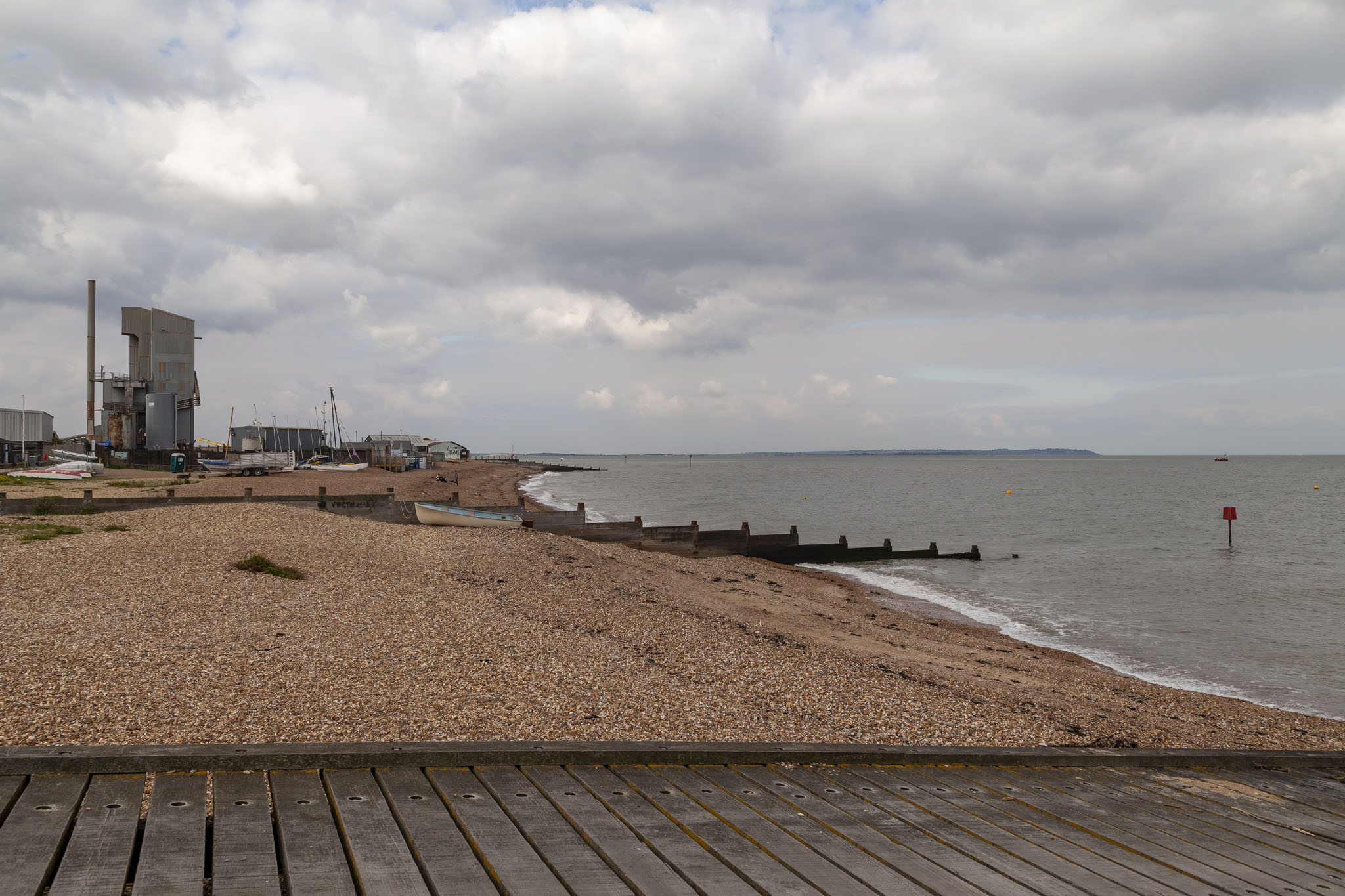When our 2015 short break in the south east of England came to an end we didn’t just drive straight back home from Margate. As I’d decided to take the M25 route, that meant we passed a few places along the north coast of Kent on the way that we’d not visited before, and, with us being fans of seaside resorts around the UK anyway, we thought we’d make an early stop at one. That ended up being Whitstable.
Archaeologists have discovered evidence that there was habitation in the area dating back to the stone age, perhaps on account of its good oyster beds (the Romans collected them extensively much later), and in the eleventh century the area was marked by a white post which gave the town its name in the Domesday Book of Witenestaple, meaning “the meeting of the white post”. We didn’t know any of that then and we weren’t that interested in finding out. We simply stopped at Whitstable to take a quick stroll along the shoreline; a stretch of the legs before the several hours in the car to come.
Whitstable doesn’t have the prettiest of beaches unless you like shingle with industrial buildings to break up the views. The shallow water churning up the sand and staining the sea view brown does nothing to add to the attractiveness. But it’s the seaside. We like being beside the seaside. Except for Blackpool. Never Blackpool.
Given the less-than-gorgeous seascape it was a little bit of a surprise to see quite so many beach huts facing out to the water at Whitstable, but people do like their sea air. It was nice to see so many slight variations in style and colours too, even if a fair few looked in need of some care and attention. I must confess to preferring this evolved, added-to-over-time appearance of huts to the identical rows you often find elsewhere; this feels more natural, more real, less a money-spinner for the local council or landowners.
With the amount of travelling we do that involves being on or by the water it’s no surprise that certain seabirds crop up time and time again in the photos I take. Cormorants are a good example.
When we’d parked our car ahead of our short walk along the beach we’d spotted a sign pointing towards Whitstable Castle. Something we like almost as much as the seaside in the UK are castles so we walked there before leaving. In truth, this was a bit disappointing as the castle only dates from the eighteenth century and was originally just an octagonal tower that later had some extensions added to turn it into a manor house with some castle-like features. So, not a lot of history to discover there, but some pleasant gardens around it and we did pop into its Orangery Tearoom and grabbed a tea (that’s what you do in tearooms) and a cake for the onward journey.
















